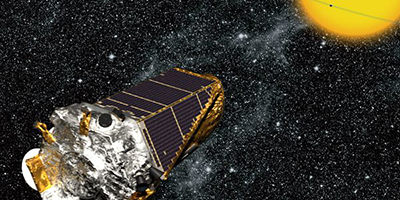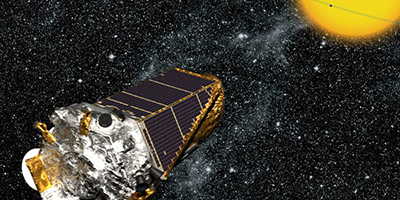Planet Search Finds No Dark Matter Black Holes
Dark matter remains such a mystery that we’re still unsure whether it’s made of microscopic particles or macroscopic bodies. On the “macro” side, dark matter could consist of relatively small black holes that formed in the early Universe. We might detect one of these so-called primordial black holes as gravitational lenses of background stars. A new analysis of data from the Kepler mission’s search for Earth-sized planets finds no black hole lensing events. From this nondetection, the researchers, reporting in Physical Review Letters, rule out part of the mass range previously thought still available for dark matter black hole candidates.
Dark matter provides the missing mass needed to keep galaxies from flying apart, but the components of this dark matter are not well constrained as far as their individual size goes. Primordial black holes, which come out of certain models of the early Universe, have a wide range of possible masses. However, certain black hole masses have already been excluded as the dominant form of dark matter because they would have shown up in astronomical data. The currently viable range for primordial black holes is between and Earth masses.
Now Kim Griest of the University of California, San Diego, and his colleagues have reduced this range further using Kepler observations. For four years, the Kepler satellite monitored roughly stars at a distance of about 3200 light years. If a primordial black hole passed in front of one of these stars, the star would become temporarily brighter because of gravitational lensing. Griest et al. sifted through the available Kepler data and turned up zero events that matched their lensing criteria, which implies that moon-sized black holes (around Earth masses) can’t make up all of the dark matter in the Milky Way. – Michael Schirber





